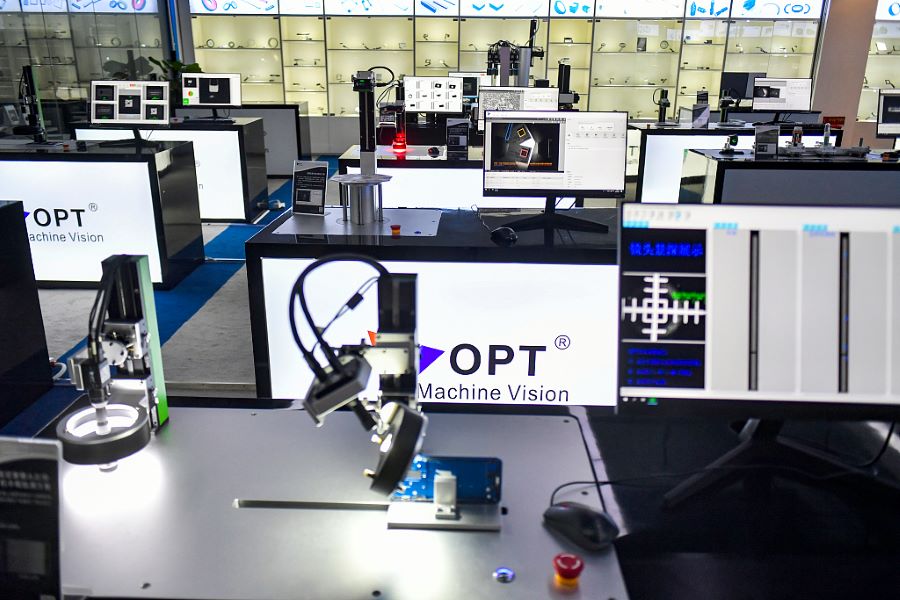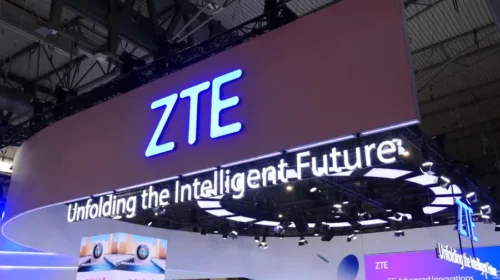Lianhe Sowell eyes big potential for machine vision AI with U.S. IPO plan

The company posted explosive revenue growth and became profitable in the last two years despite a history dating to 2007
Key Takeaways:
- Lianhe Sowell is seeking to raise $12 million through a U.S. IPO, with plans to spend some of the funds towards expanding its R&D workforce
- The machine vision company has posted huge growth over the past year, but remains small with only 22 employees and annual revenue of less than $30 million
By Hugh Chen
Artificial intelligence (AI) has jumped to global prominence since OpenAI’s release of ChatGPT in late 2022, with China quickly jumping on the bandwagon. Many Chinese companies have piled into the craze by developing similar chatbot products, but some are also seizing the moment by focusing on other areas besides large language models (LLMs).
One of those is Lianhe Sowell International Group Ltd., which focuses on machine vision, an AI subset that relies heavily on computer vision. More than a decade after its founding in 2007, the company thinks the time is ripe to capitalize on the AI craze, reflected by its filing earlier this month for a U.S. listing. The company didn’t disclose a specific fundraising goal, though Chinese media reported it is aiming to raise about $12 million.
Despite its small size and modest fundraising target, the company is notable for its sudden explosive revenue growth starting in its fiscal year through March 2023. Unlike other machine vision companies, Lianhe Sowell is also notable for the fact that its sudden revenue explosion has also made it quite profitable.
Lianhe Sowell is even older than China’s best-known AI companies, often referred to as its “four AI dragons” – SenseTime (0020.HK), CloudWalk (688327.SH), Megvii, and Yitu Technology, which were all founded in the early 2010s. That group was once the face of AI in China, shaping public perception of the technology through their work in computer vision.
Two of the four AI dragons – SenseTime and CloudWalk – have made IPOs, the former in Hong Kong and the latter in Shanghai. But their stocks haven’t gone far, as investors balked at their mounting losses and slowing revenue growth and the public shifted its AI focus from computer vision to LLMs. SenseTime’s stock reflects the fading interest in the group, with its shares now trading at less than half their IPO price from late 2021.
Part of the lack of progress for this group is its overwhelming reliance on selling to the public sector, specifically software used in surveillance cameras. Most have never been able to expand their leading facial recognition technology beyond that, posing a big challenge as public spending has begun to scale down with China’s slowing economy.
Lianhe Sowell is getting around that bottleneck with a different story, saying its machine vision technologies and solutions are being used by manufacturers in real production scenarios. Such applications include manufacturing automation and the improvement of distribution processes for customers across various industries.
Unlike other AI startups whose founding teams usually have all-star resumes, including stints at major tech companies, Lianhe Sowell’s management team’s background looks more mundane. Before founding the company, CEO Zhu Yue had little work experience other than his stint as a researcher for several years at a Shenzhen technical institute, where he studied machine vision and image recognition algorithms.
Small business, big challenges
Though the company uses very technical terms to describe its solutions, we can broadly say that it sells machines equipped with advanced computer vision software that can be used for a variety of purposes. Such machines are useful for automating various processes, helping customers reduce costs and improve efficiency.
Applications include identifying defective products on an assembly line, automatically capturing the identification numbers on containers entering and leaving a port, and other tasks that rely on visual recognition and analysis.
Lianhe Sowell thinks it can feed off substantial growth potential anticipated for China’s machine vision market over the next few years, driven by looming labor shortages as the country’s population rapidly ages. According to third-party research cited in its prospectus, the company expects the market to roughly double to 34.9 billion yuan ($4.82 billion) by 2025, up from 16.9 billion yuan in 2022.
One major bottleneck for companies developing machine vision products is the different requirements from each industry, making the technology difficult to standardize and scale. Lianhe Sowell currently only focuses on electronics manufacturers, with three such companies – two from Dongguan and the other from Shenzhen – providing more than 50% of its revenues.
Partly for that reason, the company has been unable to scale its business despite its long history, and currently has only 22 employees. It reported revenue of just $16.8 million for the six months through September last year, though that figure was up massively from the $460,000 generated during the same six-month period a year earlier. It reported similar explosive growth in its fiscal year through March 2023, with revenue for that period reaching $13.1 million for the 12-month period from $949,341 in the previous fiscal year.
The company attributed the huge jump to a recovering economy after China lifted its pandemic restrictions at the end of 2022, and also to its own increased marketing efforts that “resulted in rapid growth of customers for electronic products and software.” While it didn’t state so specifically, the huge jump also appears to indicate the company may have rolled out one or more new products during the period that have quickly gained traction.
One major differentiating factor for Lianhe Sowell from its rivals is its ability to make a profit. It reported net income of $1.58 million for the six months through last September, reversing the $32,000 loss incurred during the same period a year ago.
One of the reasons the company has managed to turn a profit, in stark contrast to many of its peers, is its adoption of an asset-light model by largely outsourcing the manufacturing of its machines, thus keeping costs under control. Also, the company’s ability to run its business through a small team has contributed to its financial success.
Some investors may appreciate the company’s ability to operate with a small team, though that also limits its ability to expand. The company has signaled that it will use part of the funds from the U.S. IPO to expand its workforce. However, given the small amount the company plans to raise, this expansion is unlikely to be substantial.
At the end of the day, Lianhe Sowell’s ability to scale up its business will be key to selling investors on its IPO. For that, it will need to expand its solutions beyond the select few customers concentrated in the electronics industry. Its sudden major revenue growth in the last year and a half could show it has the ability to quickly grow with the addition of a few key new customers. But maintaining such growth could also prove difficult given the highly specialized nature of machine vision applications and the competitive landscape dominated by larger players with more resources and broader market reach.
To subscribe to Bamboo Works free weekly newsletter, click here




